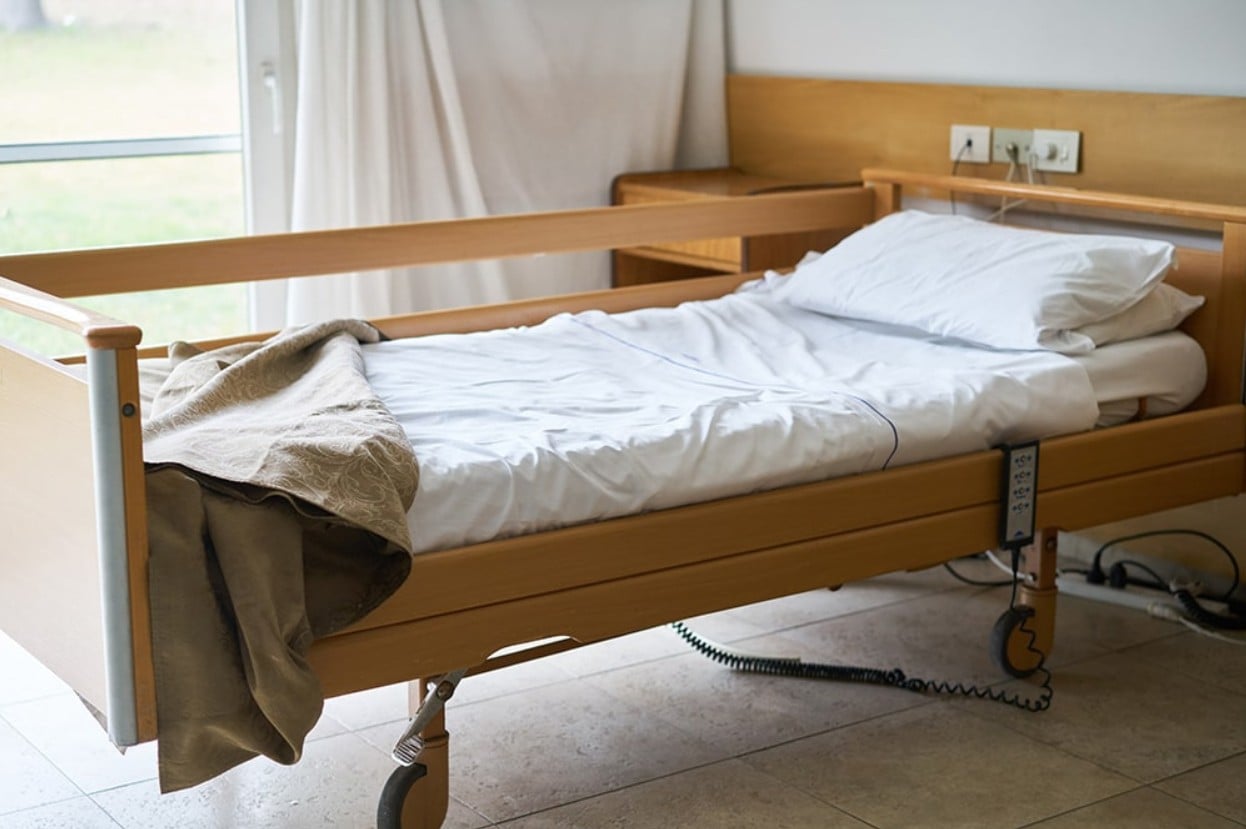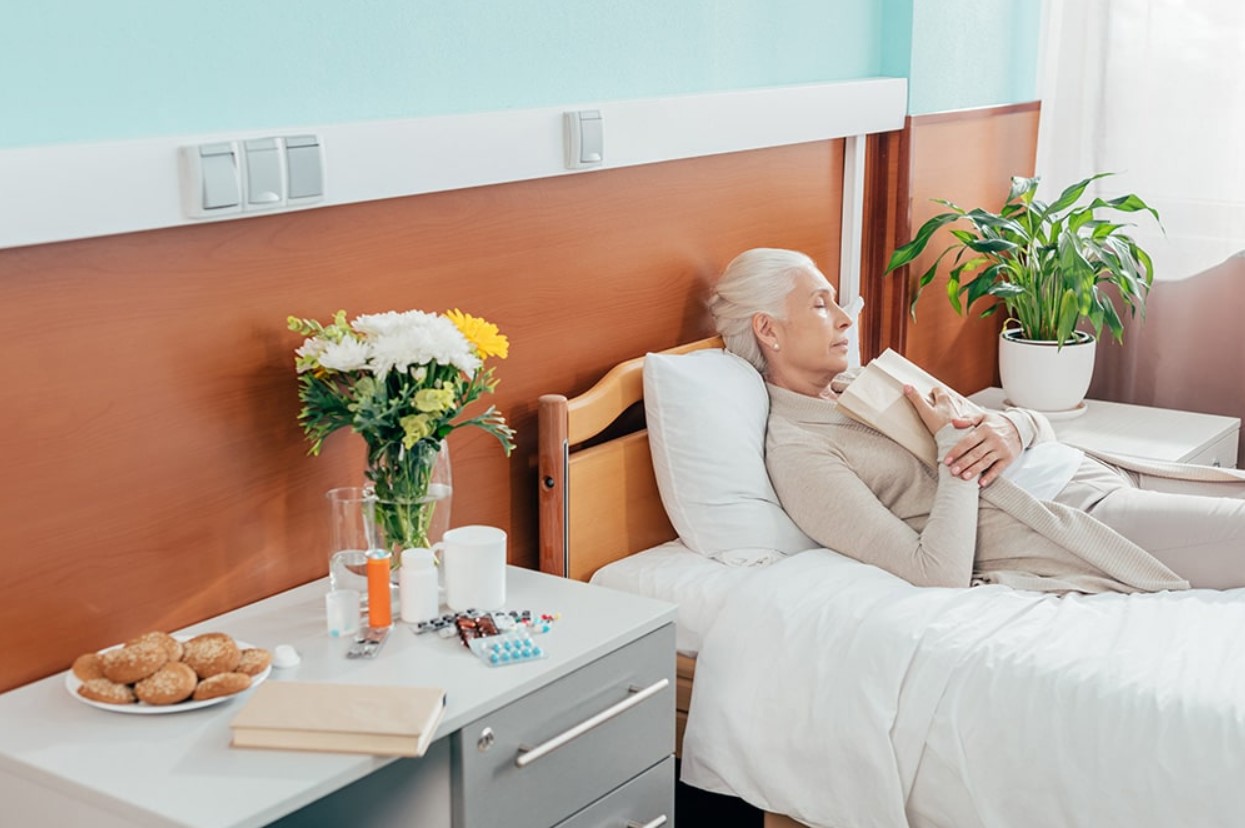
Quick Summary:
This blog discusses setting up a home healthcare room for your loved one. Learn the importance of comfort, safety, and individual needs to patient care.
Click a link to jump to the section.
- Choosing the Right Space for a Home Healthcare Room
- Essential Medical Equipment for a Home Healthcare Room
- Hospital Bed and Bedding
- Mobility and Transfer Aids
- Incontinence and Personal Hygiene Supplies
- Wound Care and Medical Supplies
- Respiratory Therapy and Oxygen Equipment
- Monitoring and Safety Equipment
- Organizing the Home Healthcare Room for Efficiency
- Creating a Comfortable and Healing Environment
- Maintaining Cleanliness and Infection Control
- Caregiver Tips for Managing a Home Healthcare Room
Introduction
Setting up a home healthcare room is vital for recovery and long-term care. Creating a safe and accessible patient room enhances comfort and caregiver efficiency.
Home healthcare planning for loved ones involves assessing patient needs and finding medical room essentials for home care. This blog explores key components of home care setup for seniors and patients.
Choosing the Right Space for a Home Healthcare Room
The best room selection for home medical care depends on specific requirements. Choosing the right space for patient comfort means adapting living spaces for caregiving.
Allow for easy access to a bathroom and essential amenities. Reflect on the ideal room size for home healthcare setup — make sure there is enough space for your patient's needs and supplies.
When selecting a room, ensure home accessibility for medical equipment and caregiver movement. You'll also want to incorporate proper lighting, ventilation, and privacy.
Essential Medical Equipment for a Home Healthcare Room
1. Hospital Bed and Bedding
When choosing an adjustable hospital bed, determine whether you need a manual, semi-electric, or full-electric hospital bed.
Comfort is a key part of the best home hospital beds for patient care. You might consider pressure-relieving mattresses for bedsores, comfortable bedding for medical patients, and waterproof bedding for incontinence protection.
2. Mobility and Transfer Aids
Safely assisting a loved one with mobility is easier with aids. For example, you'll achieve fall prevention with bed rails and grab bars.
Walkers, rollators, and wheelchairs offer patient mobility. Caregivers should select wheelchairs and mobility solutions for patients depending on their needs.
The best transfer aids for home caregivers include lift chairs, patient lifts, and transfer boards for safe movement. When choosing the right patient lift for home use, account for weight requirements, ability level, and caregiver strength.


3. Incontinence and Personal Hygiene Supplies
The best incontinence products for home care include adult diapers and underpads. You could also select waterproof mattress protectors for incontinence. Consider adult diapers and underpads for bedridden patients, as well as bedside commodes and portable urinals for convenience.
Reflect on hygiene solutions for caregivers and personal care essentials for patient hygiene. These include bathing wipes, no-rinse cleansers, and disposable gloves.
4. Wound Care and Medical Supplies
Consider medical tape and bandage selection for home care. First-aid necessities, bandages, and gauze dressings are among the best wound care supplies for home patients.
You’ll want to get essential medical kits for home caregiving. These include gloves, medical tape, and antiseptic solutions for infection prevention.
To observe safe sharps disposal methods, immediately place all used sharps in a tightly shut, puncture-resistant container. This will minimize cuts and needle stick injuries.1
5. Respiratory Therapy and Oxygen Equipment
Get the right respiratory therapy equipment for patients. This includes CPAP machines for sleep apnea management and home nebulizers for respiratory treatment.
The best oxygen concentrators for home use meet patient requirements of portability, battery life, sound level, and delivery settings.2
Prioritize safety when using oxygen units. Here are a few oxygen therapy safety tips for home use:
- Avoid high temperatures and flames
- Steer clear of oils, aerosols, and vapor rubs
- Store the unit upright in an open space
- Stay prepared with a fire extinguisher, generator, and backup equipment3
6. Monitoring and Safety Equipment
The best medical monitoring devices for home care make health management easy. You’ll need blood pressure monitors, pulse oximeters, and thermometers for blood pressure and oxygen monitoring at home.
Acquire essential safety equipment for patient rooms. This includes smoke detectors and carbon monoxide monitors for emergencies. You might even add emergency call buttons for patient safety or medical alert systems for seniors and caregivers.
Organizing the Home Healthcare Room for Efficiency
Optimize home healthcare by:
- Labeling and tracking medical supplies
- Organizing a home care room for easy access
- Reviewing storage solutions for medical supplies (i.e., carts, shelving, basket systems, and workstations)4
- Implementing a caregiver station setup for efficiency with checklists, logs, and essential tools
- Ensuring quick, easy access to essential items
To maintain an ordered space, consider implementing these home healthcare organization tips.
Creating a Comfortable and Healing Environment
Comfort is essential to creating a supportive healthcare environment. Comfort-enhancing home care solutions can look like:
- Reducing noise in a patient care room
- Managing temperature control for patient comfort
- Ensuring the best lighting for a home care room
You can also add personalized touches for a healing space, such as family photos, favorite blankets, and entertainment.


Maintaining Cleanliness and Infection Control
Knowing how to sanitize a home healthcare room is crucial. Caretakers should prioritize keeping patient areas clean and safe. Follow medical waste disposal guidelines to discard sharps and soiled linens.
To prevent sickness, follow infection control measures in home healthcare. Regularly disinfect medical equipment and surfaces using disposable gloves, hand sanitizers, and antimicrobial wipes. The best disinfectants for medical equipment eliminate harmful contaminants.
Caregiver Tips for Managing a Home Healthcare Room
Create a step-by-step daily routine for home caregivers. Best practices for adjusting patient care setup involve monitoring individual patient needs and using your time accordingly.
To balance personal and patient needs, follow these time management tips for caregiving:
- Break large tasks into smaller ones
- Share an online group calendar
- Set time limits for tasks
- Put aside time for yourself each day5
Reducing stress while caring for a loved one is important for preventing burnout. Self-care tips for caregivers include sleeping, eating well, and hydrating. Minimize stress with relaxation techniques and take breaks when needed.
Conclusion
In home healthcare, creating a safe and accessible patient environment is essential. Review these final tips for setting up a home healthcare room — ensure that you are:
- Investing in quality home healthcare products
- Making home care comfortable and efficient
- Planning a home care setup for long-term needs
Ultimately, aim to customize your loved one’s room for maximum support and comfort. You can find reliable home healthcare products on our site for a safe, efficient setup.
Footnotes
1 "U.S. Food and Drug Administration." Best Way to Get Rid of Used Needles and Other Sharps.
2 "Sornberger, C." The 5 Best Portable Oxygen Concentrators of 2024: Expert Reviews & Buyer's Guide. Main Clinic Supply.
3 "American Lung Association (2023, December 15)." Oxygen Therapy: Using Oxygen Safely.
4 "DSI." Providing Smart Healthcare Storage Solutions.
5 "Caregiver Action Network." Coping With Time Demands.

